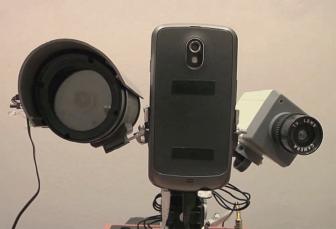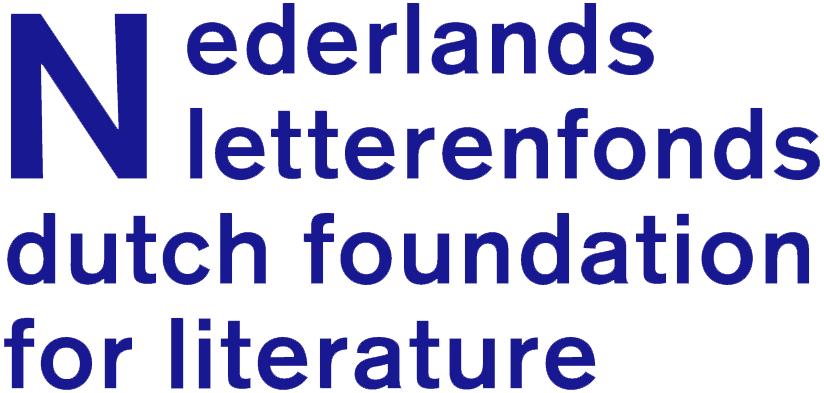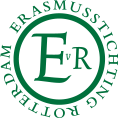Article
"I don't know that we're not machines. I wouldn't rule it out."
THE POET AND THE ROBOT

July 08, 2017
She is made up of two cameras that serve as eyes, a nose made of a cellular telephone and a television screen mouth. She speaks in English, with a strip of light on the television screen simulating mouth movement and her cameras eyes simulating facial expressions. A speech identification and analysis system transfers her interlocutor’s words for semantic analysis, after which Frankie responds with another question, which may or may not have something to do with what was previously said. One of her eyes records the conversation and uploads it to the archive on the video-sharing site, Vimeo.
Frankie's creators are using her to create an atmosphere where we can speak without subjective intervention, as if we were sitting in front of a silent camera. By speaking, she compels us to engage in some sort of conversation, though she does so with maximum neutrality. According to the explanatory text, Frankie has no nationality, race or socioeconomic status. She comes with no prejudices; without any built-in inequality.
So who exactly is Frankie? Maayan Sheleff, the curator of Artport, says, “She has no identity. She has no gender or age. You, as the interviewee, can project anything onto her that you wish; she’s a bit like a mirror. It’s like if I were to give you a camera and you took a picture of yourself. There is no subject behind the camera that composes the questions, but there is a narrative that we planned and programmed. It’s not really objective documentation; there’s no such thing as objective documentation.”
What is the goal of the project? “It raises questions of surveillance that we’re surrounded by all the time — how much we surrender to this kind of surveillance, how much we give away the information freely," Sheleff says. "There’s an echo of the surveillance that we experience in our daily lives, through Facebook, surveillance cameras, the governments that collect information about us, the biometric database. It’s a machine that wants you to surrender to it.”
“In this case, the computer doesn’t respond to what the person does," says Eran Hadas, a programmer, poet and Internet artist. "It works in the opposite direction; the person responds to the computer’s questions. The project deals with the observation of human beings, which is the most artistic and poetic thing there is. That’s the basis of art and poetics, but it’s also a futuristic observation — observation by computer.”
Frankie’s name was taken from the English word “frankness” and also from the name Frankenstein — the scientist Victor Frankenstein from Mary Shelley’s novel "Frankenstein, or The Modern Prometheus." Sheleff wrote of Frankie: “While Frankie reflects our relationship with the machines that control our lives, she also observes the manner in which we choose to appear and present ourselves in the digital age and how this narcissistic world affects our perception of the other.”
Sheleff mentions the computer program ELIZA, which used primitive language processing to simulate the speech of a psychiatrist when a certain script was run. “Unlike ELIZA, whose goal was to create a relatively rapid ping pong of question and answer, Frankie’s goal is to make the interviewee talk as much as possible. It’s actually a kind of monologue-generator. On the one hand, it examines a phenomenon, called the ELIZA effect, which makes people treat social robots like people and believe that they are entities that understand them and are empathetic toward them. We want so much to be understood that we fill in the gaps with robots.”
“It has something that intensifies the ELIZA effect — the fact that it goes out into the physical world,” says Gal Eshel, who studied psychology, computer science and film and works on robot development in his free time. “The whole illusion of her existence and her life; the moment you say something sad, she lowers her eyes a bit.”
“I don’t like this racist snobbery of people versus robots,” says Hadas. “I don’t know that we’re not machines. I wouldn’t rule it out.”
Poet Eran Hadas is also a new-media artist. Below, a Haaretz report on the art project he undertook with two collaborators in 2013:
Frankie is a documentary robot who interviews people in an attempt to learn what it is to be human, so she’s very nosy. Visitors to the Non Finito exhibition at Artport Tel Aviv, an incubator for young artists, could meet and speak with her.
I take a seat facing her and Frankie starts asking questions. They embarrass me. She drops the bombshell pretty quickly: What is it to be human? It’s exhausting, I tell her, particularly after a long and particularly draining work week. She wants to know more. I ask her about herself. She evades the question. The conversation is not comfortable for me, so I end it politely. She responds with a polite goodbye and begins speaking with her creators, Maayan Sheleff, Eran Hadas and Gal Eshel. From time to time she tries to restart our conversation.
The world around us is becoming increasingly documented, from the documentation that we do ourselves to that which is done about us; from documentation done consciously to documentation done unconsciously. Frankie, yet another documenter, is somewhere between street surveillance cameras and the cameras on cellular phones that we turn toward ourselves.She is made up of two cameras that serve as eyes, a nose made of a cellular telephone and a television screen mouth. She speaks in English, with a strip of light on the television screen simulating mouth movement and her cameras eyes simulating facial expressions. A speech identification and analysis system transfers her interlocutor’s words for semantic analysis, after which Frankie responds with another question, which may or may not have something to do with what was previously said. One of her eyes records the conversation and uploads it to the archive on the video-sharing site, Vimeo.
Frankie's creators are using her to create an atmosphere where we can speak without subjective intervention, as if we were sitting in front of a silent camera. By speaking, she compels us to engage in some sort of conversation, though she does so with maximum neutrality. According to the explanatory text, Frankie has no nationality, race or socioeconomic status. She comes with no prejudices; without any built-in inequality.
So who exactly is Frankie? Maayan Sheleff, the curator of Artport, says, “She has no identity. She has no gender or age. You, as the interviewee, can project anything onto her that you wish; she’s a bit like a mirror. It’s like if I were to give you a camera and you took a picture of yourself. There is no subject behind the camera that composes the questions, but there is a narrative that we planned and programmed. It’s not really objective documentation; there’s no such thing as objective documentation.”
What is the goal of the project? “It raises questions of surveillance that we’re surrounded by all the time — how much we surrender to this kind of surveillance, how much we give away the information freely," Sheleff says. "There’s an echo of the surveillance that we experience in our daily lives, through Facebook, surveillance cameras, the governments that collect information about us, the biometric database. It’s a machine that wants you to surrender to it.”
“In this case, the computer doesn’t respond to what the person does," says Eran Hadas, a programmer, poet and Internet artist. "It works in the opposite direction; the person responds to the computer’s questions. The project deals with the observation of human beings, which is the most artistic and poetic thing there is. That’s the basis of art and poetics, but it’s also a futuristic observation — observation by computer.”
Frankie’s name was taken from the English word “frankness” and also from the name Frankenstein — the scientist Victor Frankenstein from Mary Shelley’s novel "Frankenstein, or The Modern Prometheus." Sheleff wrote of Frankie: “While Frankie reflects our relationship with the machines that control our lives, she also observes the manner in which we choose to appear and present ourselves in the digital age and how this narcissistic world affects our perception of the other.”
Sheleff mentions the computer program ELIZA, which used primitive language processing to simulate the speech of a psychiatrist when a certain script was run. “Unlike ELIZA, whose goal was to create a relatively rapid ping pong of question and answer, Frankie’s goal is to make the interviewee talk as much as possible. It’s actually a kind of monologue-generator. On the one hand, it examines a phenomenon, called the ELIZA effect, which makes people treat social robots like people and believe that they are entities that understand them and are empathetic toward them. We want so much to be understood that we fill in the gaps with robots.”
“It has something that intensifies the ELIZA effect — the fact that it goes out into the physical world,” says Gal Eshel, who studied psychology, computer science and film and works on robot development in his free time. “The whole illusion of her existence and her life; the moment you say something sad, she lowers her eyes a bit.”
“I don’t like this racist snobbery of people versus robots,” says Hadas. “I don’t know that we’re not machines. I wouldn’t rule it out.”
© Ido Kenan
Translator: Haaretz English edition
Source: Haaretz July 23, 2013
Sponsors
























